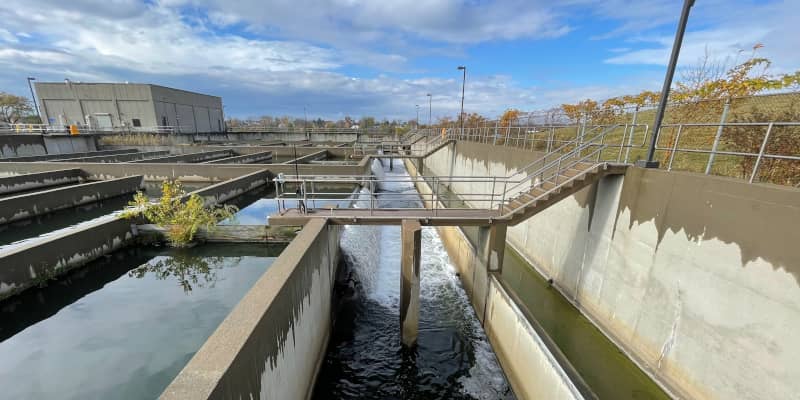Redefining resilience: Innovation where it's needed most
Across the US, water utilities face mounting risks – aging infrastructure, tighter budgets, and a more volatile climate – all while the funding gap continues to grow. But resilience doesn’t have to wait. Proven technologies already exist that can help utilities stretch limited resources, reduce costs, and modernize aging systems. When paired with innovative financing and stronger collaboration, these tools offer a clear path forward.
Tucson Water is one of many U.S. utilities leading the way. Facing some of the country's most severe water stress, the utility is blending traditional water wisdom with new technology to build a more secure and self-reliant future – reducing reliance on imported water and making the most of what’s available.
Albert Cho, Xylem’s Senior Vice President and Chief Strategy & External Affairs Officer, joined a McKinsey webinar to discuss the company’s latest report: Water resilience: Closing the funding gap for utilities. The headline finding from the report is striking: the U.S. water sector is already short $110 billion a year, and that gap could grow to $194 billion by 2030.

But the bigger takeaway: money is only part of the story. The solutions are already here – it’s time to scale them.
Utilities lead the way on everything from drought response to water affordability – often without sufficient resources. Immediate priorities frequently usurp long-term plans.
Over 90% of drinking water systems in the U.S. serve fewer than 10,000 people. Only 15% of small utilities say they can raise the money for resilience-related investments, and just 11% have an actionable adaptation plan.
Utilities need real support – practical solutions and the expertise to deploy them. The private sector must be a cooperative partner: bringing solutions to the table, helping scope resilient investments, and enabling sustained improvements through technical, financial, and institutional innovation.
Technical innovation: Smart tools, shared benefits
There’s no shortage of proven technology in water. Smart meters, predictive maintenance, and digital twins help systems run more efficiently, adapt faster, and reduce risk.

McKinsey estimates digital tools can cut operating costs by 10-20% and capital costs by 20–30%. Global Water Intelligence notes digital technologies, including AI, can reduce capital needs by up to 10% annually.
The Buffalo Sewer Authority saved $145 million using a smart sewer system instead of building new tanks. Loudoun County, Virginia, is recycling hundreds of millions of gallons of water yearly to support a growing data center economy.
Many utilities don’t have the staff or budget to adopt these tools on their own. They’re already running at capacity.
That’s where state agencies, funders, and tech providers come in: simplifying procurement, sharing what works, and scaling proven solutions.
Financial innovation: Make resilience bankable
According to the National Institute of Building Sciences, every $1 invested in hazard mitigation avoids $6 in disaster costs. That said, even when public money is available, it often comes with barriers.
McKinsey estimates that optimizing state revolving funds could close $9 billion of the national utility funding gap.
That would mean faster approvals, simpler applications, and more support for small systems that need help with planning and permitting.
Other funding tools are already in use. Cities are tapping into stormwater fees, monetizing waste, and issuing green bonds. In Stillwater, Oklahoma, a new data center is helping fund local water infrastructure as part of its development agreement.
These are not pilots. They’re working models – and they can be scaled.
Institutional innovation: Governance that gets results
Utility fragmentation is a major challenge. There are more than 50,000 public water systems in the US, and many operate independently, with varying standards and limited coordination. This slows progress.
Regional coordination is one way to change that. In Ohio, Coshocton and West Lafayette merged systems after decades of shared challenges. With support from state agencies and the Rural Community Assistance Partnership (RCAP), they created a model that lowered costs, built trust, and improved service.
Some utilities share operations. Others access services through regional providers. Those savings can be reinvested into resilience and system upgrades.
Our water workforce is also part of this discussion. A resilient utility requires people. One idea discussed in the McKinsey webinar is to treat workforce planning like watershed planning – aligning training, funding, and support regionally, and creating labor pipelines to meet sector needs.
The opportunity is already here
Utilities are building smarter systems under real constraints. They’re doing great work. What they need is a system that makes it easier to scale that work.
That means making tools easier to adopt, capital easier to access, and governance easier to navigate.
Resilience shouldn’t depend on a utility’s size or location. The goal should be the same: treat resilience as a shared mandate – not a solo mission – so every community is positioned to thrive.

